Uncle John rose with the morning sun on April 23, 1893 and made a bee-line for the Horticultural Building on the fairgrounds of the World’s Columbian Exposition in Jackson Park, Chicago. The opening of the Fair—when President Cleveland would push the button to unfurl the flags along the White City rooftops and release the water to the glorious fountains—was still nine days away. Today, however, the Chief of the Horticultural Department was expecting a throng of visitors to his verdant exhibit hall, all anxious to see a different kind of unfurling.
What had kept him awake with worry much of the night was the timing of it all. After waiting a lifetime, the plant under his care was ready for the biggest show in the world … though just a bit ahead of schedule.
The century plant was blooming!
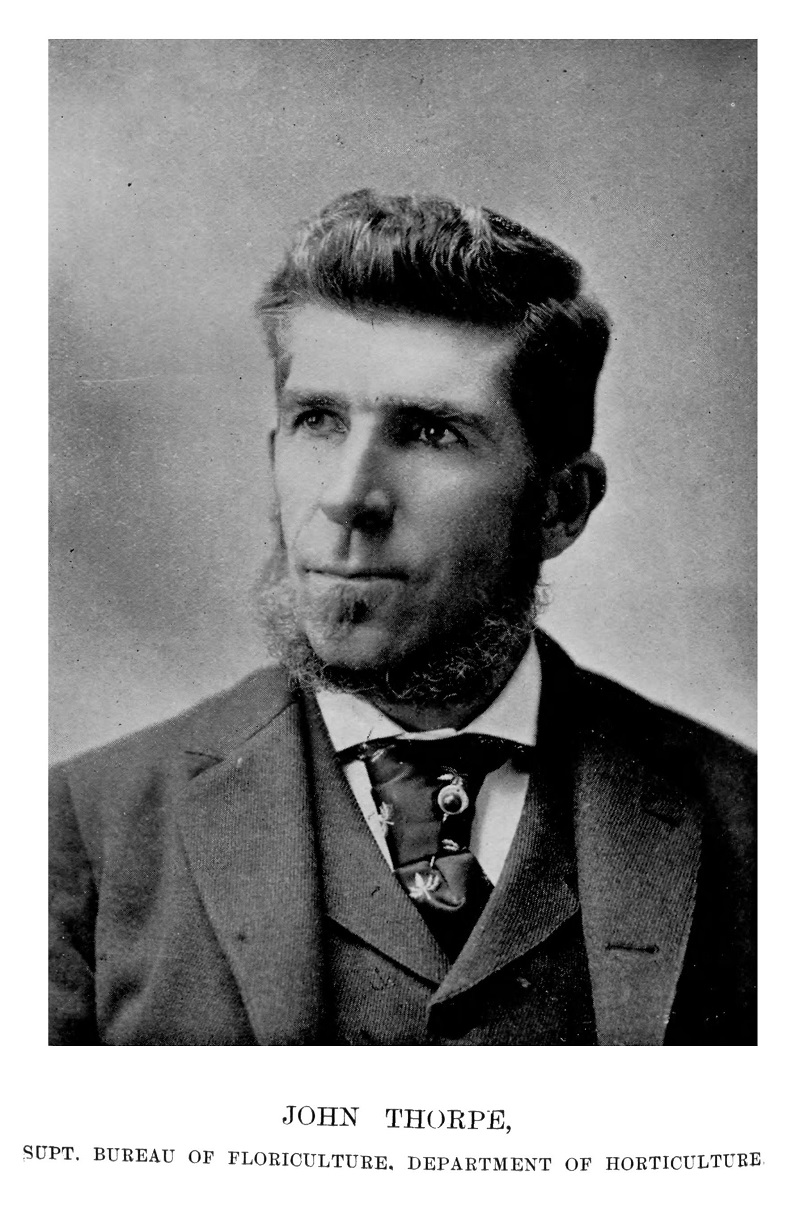
John Thorpe, Superintendent of the Bureau of Floriculture for the 1893 World’s Columbian Exposition. [Image from Campbell, James B. Campbell’s Illustrated History of the World’s Columbian Exposition, Volume II. M. Juul & Co., 1894.]
It takes the notion to grow
At a World’s Fair filled with displays of “the biggest”—a golden colossus, a mammoth squash, a huge walk-in flour barrel, massive chocolate statues, and an immense rotating wheel (to name but a few)—the biggest grower on the fairgrounds was an unassuming plant sitting under the main dome of Horticultural Hall.
The so-called century plant—Agave Americana—is a gigantic cactus native to Mexico and Texas. Despite the moniker, this plant typically lives only a few decades. The Los Angeles Times noted that “the common error perpetuated in its name (that it blooms only once in a century) is repeated with each account … it requires not more than twenty-five years to come to full maturity.” A century plant is monocarpic, meaning that it blooms just once in its lifetime. The show is spectacular. “All at once it takes the notion to grow, and then it makes up for its past indolence,” noted a Chicago newspaper [“World’s Fair Doings”]. At the end of its life, the plant uses all its energy to shoot up a tall stalk with yellow blossoms. And then it dies.
The century plant on display at the 1893 World’s Columbian Exposition in Chicago was ready to begin its spectacular flowering event, even if the Fair wasn’t quite ready to open.
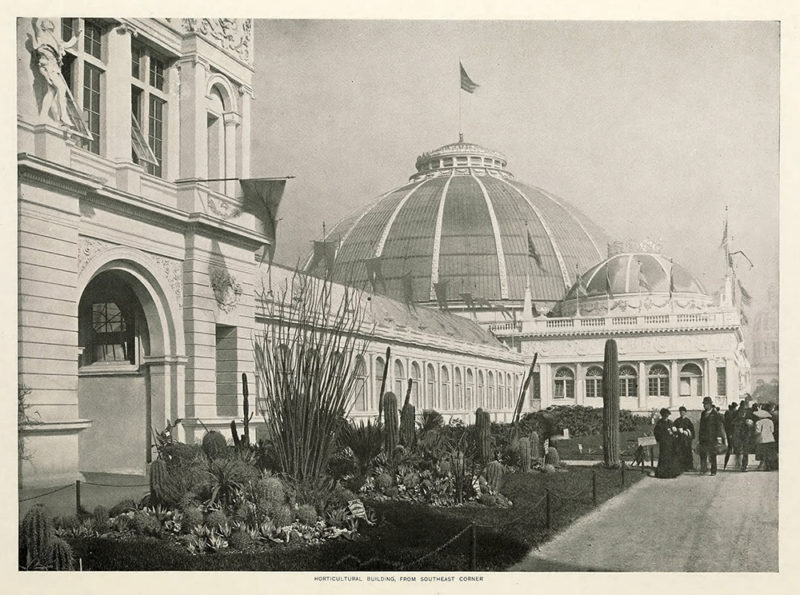
The Horticultural Building, designed by William Le Baron Jenney. [Image from Bancroft, Hubert Howe The Book of the Fair. The Bancroft Company, 1893.]
Uncle John’s discovery
Surprisingly, the century plant that would become a famous horticultural exhibit of the 1893 World’s Fair came not from Mexico or the southeast United States, but from Richmond, Indiana.
The Columbian Exposition had appointed John Thorpe as Superintendent of the Bureau of Floriculture on September 10, 1891. His greenhouses and flowers were part of the larger Department of Horticulture. Soon after his appointment, “Uncle John” (as he was widely known) began touring the United States in search of interesting specimens.
While on one of his flower-hunting tours in the fall of 1892, Mr. Thorpe discovered a fine example of Agave Americana that had for forty years been an heirloom nurtured by the Reeves family of Richmond, Indiana. Caroline Middleton Reeves had no idea that her plant was preparing to blossom at long last. Having an eye for century plants, Mr. Thorpe saw “evidence of a coming glory,” recognizing from its appearance that a flower-bearing stalk would shoot upward within a few months. Could it hold off until May 1?
The century plant from Richmond joined the growing collection in Horticultural Hall in early December 1892. After loaning her impressive agave plant for the Chicago fair, Mrs. Reeves (1827−1911) later became an important local philanthropist and benefactor of the Morrisson-Reeves Library in Richmond.
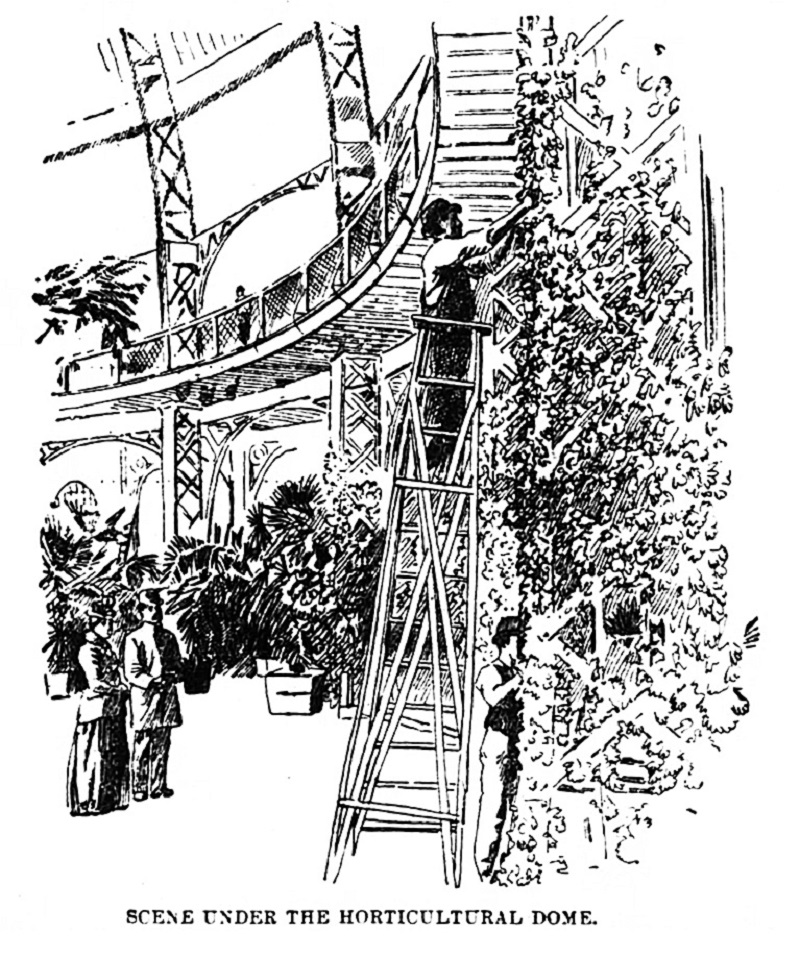
The scene under the Horticultural dome [Image from the Chicago Inter Ocean Jan. 22, 1893.]
The sensation of the hour
By January 1893, still four months before the official opening of the Exposition, the Horticultural Building offered abundant displays for visitors to the fairgrounds. Among the approximately 26,000 plants, the century plant was the clear star of the show.
The central pavilion of William Le Baron Jenney’s Horticultural Building was topped by a massive glass dome, 187 feet in diameter and 113 feet high. In a circular space underneath the dome stood an artificial mound designed to represent a mountain but widely thought to have missed the mark. A Crystal Cave attraction with paid admission operated beneath the mound covered with plants, which became known as the “Palm Mountain.”
At ground level near this mound stood the century plant. A measuring stick next to it allowed all to see its remarkable progress upward.
While some newspapers described the agave plant display as “the sensation of the hour” and “the center of attraction at Jackson Park,” others were not as impressed. The New York World reported in March that “at present the public has selected a not very remarkable specimen of the so-called century plant—Agave Americana—as the centre of interest.” [“Where the Show Has Begun”] Even the hometown Chicago Inter Ocean was puzzled by the buzz, writing:
“While the century plant is the present public idol, it is difficult to understand why it is so. In comparison with it a common telegraph pole is a thing of beauty. … It is thoroughly commonplace in everything except its eccentricities, and yet it draws the crowd from its more deserving neighbors.” [“World’s Fair Doings”] .
A Vermont reporter described it as “the most ungainly exhibit” but also acknowledged that the agave plant “possessing Chicago spirit—genius for getting on—is a great favorite despite its ugliness.” [“Another Chicago Letter”]
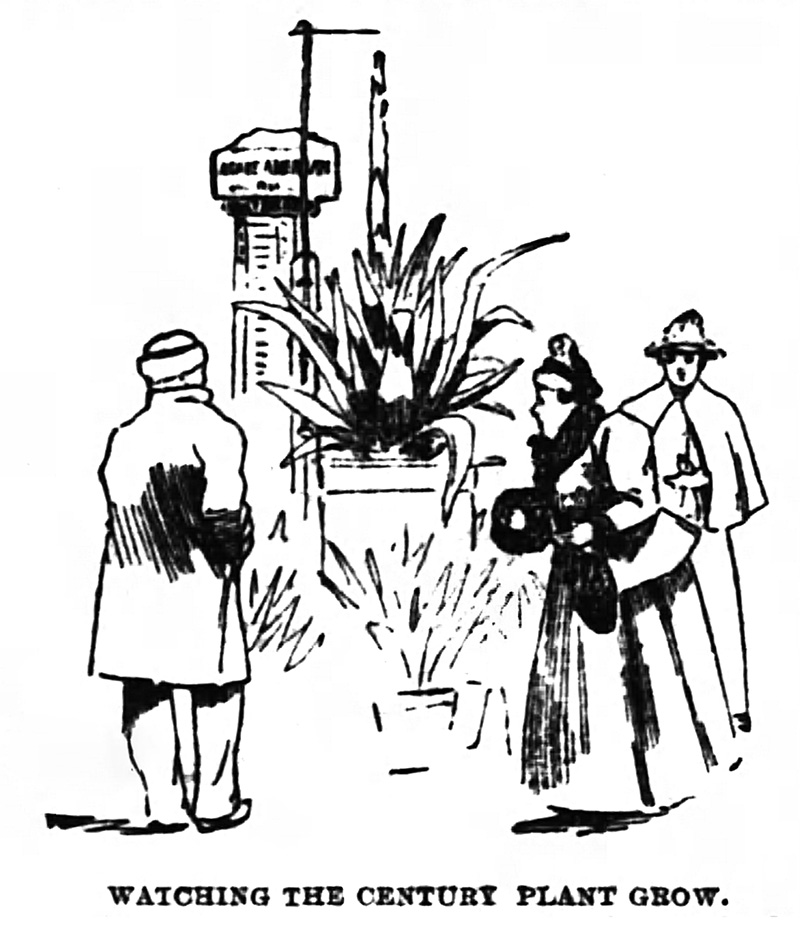
Watching the century plant grow [Image from the Chicago Inter Ocean Jan. 22, 1893.]
Heathenish growth rate
Right around Christmas Day of 1892, the plant surprised the garden attendants by “shooting up a slender stem from its center.” [“Primrose Show Open Soon”]
A century plant “grows usually at the uniform rate of about an inch and a half a day,” reported the Chicago Tribune on January 25. Lampooning east-coast Republicans Matthew Quay and Elliott Fitch Shepard, the paper added that measurements of the specimen in the Horticultural Building at the Fair
“… showed that this uncivilized Mexican plant, either unaware of the regulations prescribed by the American Congress or an impudent defiance thereof, had grown two whole inches Sunday. This will necessitate prompt and decisive action on the part of Senator Quay and Col. Elliot F. Shepard. It is undecorous. It is improper. It is heathenish.”
Some reports claimed this heathenish growth rate to be an astonishing three inches per day, though accurate measurements in January showed recorded a growth rate closer to two and one quarter inches per day, and the mighty plant reached a height of 56 inches that month.
Tongue firmly in cheek, Superintendent Thorpe told the press that “if it keeps up its present record, the plant will reach the top of the Horticultural dome at 10 o’clock on the morning of July 3, 1894, provided it does not bloom and die before that time.” [“World’s Fair Doings”] (His math was just a bit off; growing 2.25 inches a day would require 603 days to reach the 113-foot tall dome.)
In truth, Chief Thorpe expected the plant to reach a height of thirty feet before unfolding its blossoms. Observers of the mature plant reported heights ranging from twelve to twenty-five feet high.
When the agave plant would finally bloom was a point of continuous conjecture and consternation. In January, Thorpe was expecting a bloom in February. In February, he was eyeing March. On March 4, the New York press reported the specimen would blossom in three to four weeks. As the plant climbed toward the glass ceiling, the Fair’s Opening Day on May 1 became tantalizingly closer.
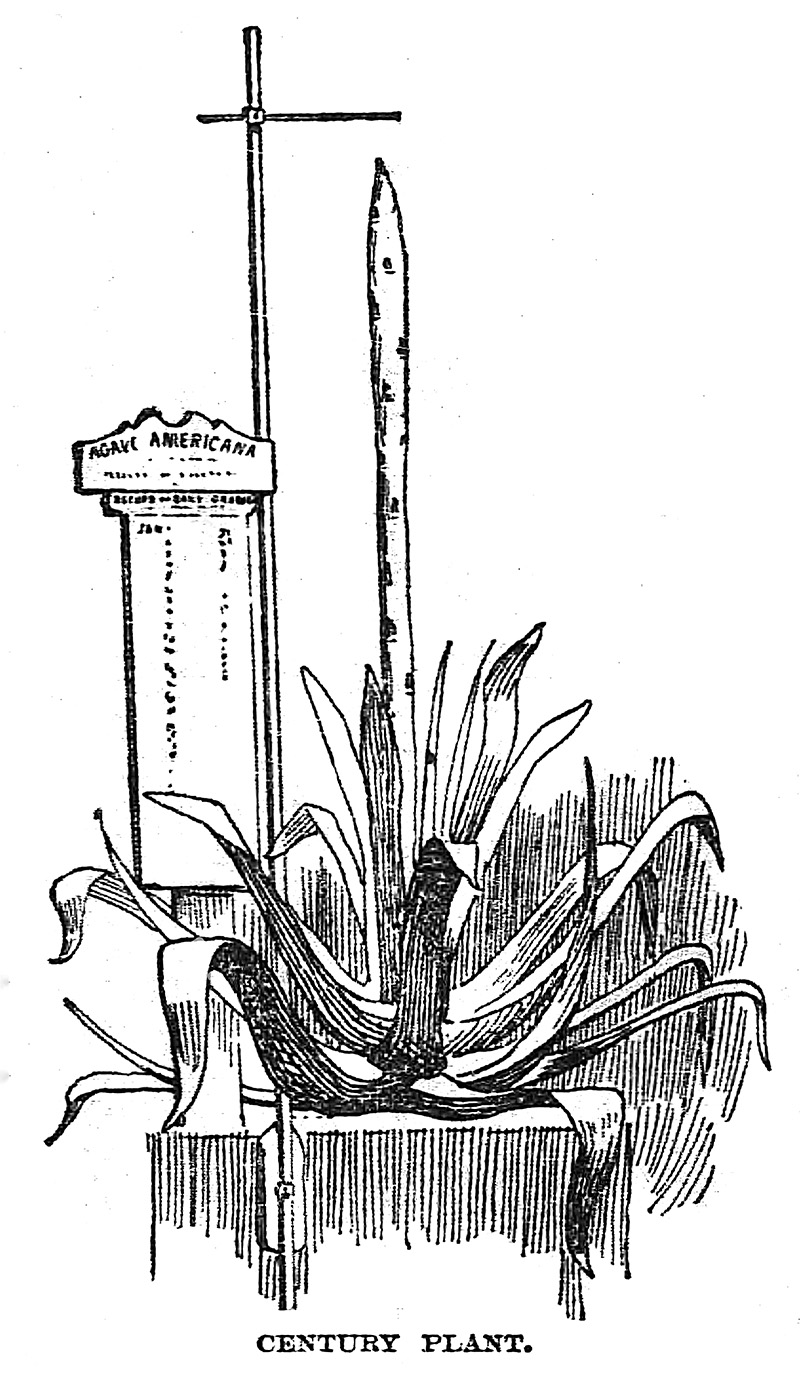
The century plant in February. [Image from the Chicago Tribune Feb. 4, 1893.]
It has made a mistake in blossoming so soon
In early April, the century plant could wait no longer, and small blossoms made their appearance. The Agave Americana “doesn’t take much stock in sentiment,” observed the Chicago Tribune when the plant ignored the wishes of floricultural assistants and began to blossom well ahead of Opening Day. “When it got ready to open its eyes and look about it yesterday it didn’t consult either the gardeners or the wishes of the great American public.”
In an attempt to shut out the light and retard the blooming or preserve the flower, John Thorpe ordered tissue paper “night caps” placed over each blossom cluster on April 19. He hoped to “cheat the plant into the belief that it has made a mistake in blossoming so soon.” [“With Night Caps On”] The “ignominiously hooded” plant also would be kept concealed from the gaze of visitors.
On April 23, nothing could keep the spectators away, and Chief Thorpe climbed his step ladder to carefully remove the night caps. Vast crowds began to fill Horticultural Hall, to the point of an uncomfortable mass by evening, all eager to see the blossoming giant.
Towering some fifteen feet above the base of the plant, the flowers were a beautiful chrome yellow color and were expected to last for around six weeks. That offered plenty of time for many thousands of visitors to the fair to see the once-in-a-lifetime display of this exhausted century plant.
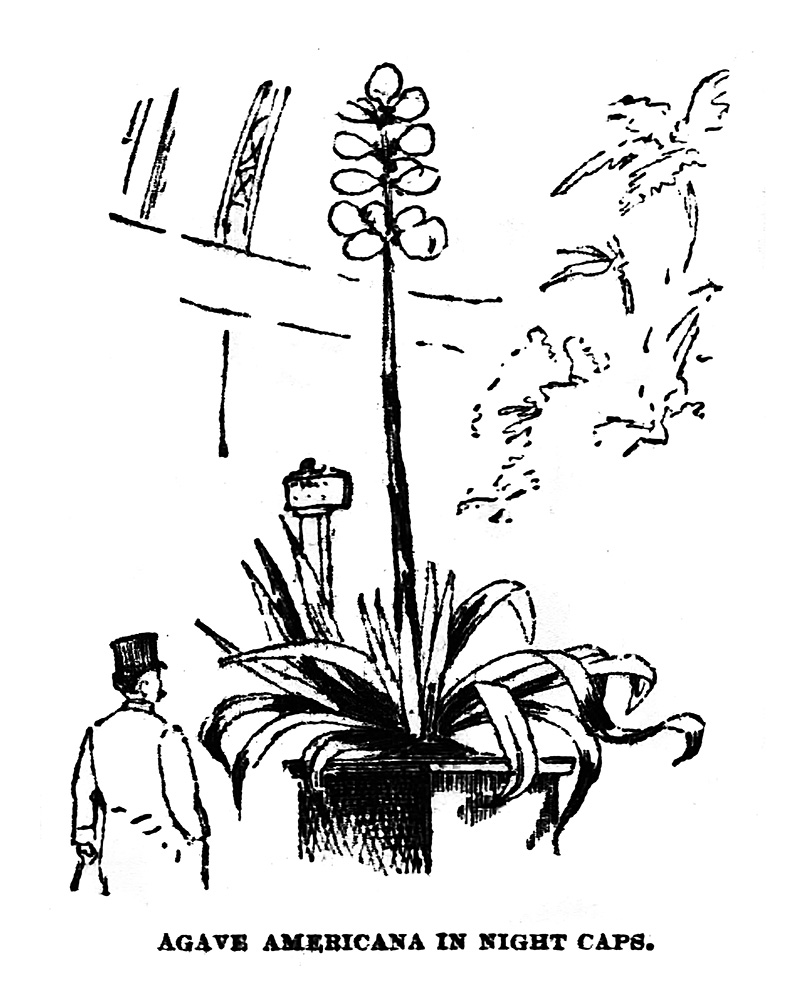
Agave Americana in Night Caps [Image from the Chicago Tribune Apr. 20, 1893.]
The great triumph of the exposition
An Indianapolis newspaper reported that “the great triumph of the exposition is the unique spectacle of a century plant … in full bloom. This plant has attracted thousands of visitors for weeks and will continue to do so until it has run its race …” [“Products of the Soil”]
When young man from Decatur who worked at the Fair wrote home to his parents about the amazing global diversity assembled in Chicago, he singled out the agave plant:
“I have seen nearly every race of people on the earth. It is quite a sight to see how they live and the houses they live in made of fishing poles and of grass, they way they work and the tools they use. The horticultural building is grand—flowers from all over the world, including a century plant that is about as large as a bucket at the base and is higher than the towers at home.” [“Decatur Boy at the Fair”]
One historian recorded that the flowering Agave Americana “while not gaudy or especially attractive, is illustrious.” [Truman 300] “There was some disappointment at the appearance of the blooms on the century plant,” reported the Chicago Inter Ocean, “for they are by no means beautiful as compared with hundreds of other flowers which require much less time to develop.” [“Rare Flower Exhibited”]
Other Agave Americana plants joined the celebrity from Indiana on “Palm Mountain” under the Horticultural glass dome. “Never before in the history of flower-shows has such a collection been gathered together,” advised one guide book, “and the century plant now in bloom under the beautiful central dome may burst forth into flowers again before such another may be viewed.”[Week at the Fair 160]
The beautiful sight of their yellow petals reaching skyward would soon be competing with chocolate statues, a prune knight, a mammoth cheese wheel, a Liberty Bell of oranges, and countless other wonders from the plant kingdom on display at the 1893 World’s Fair.
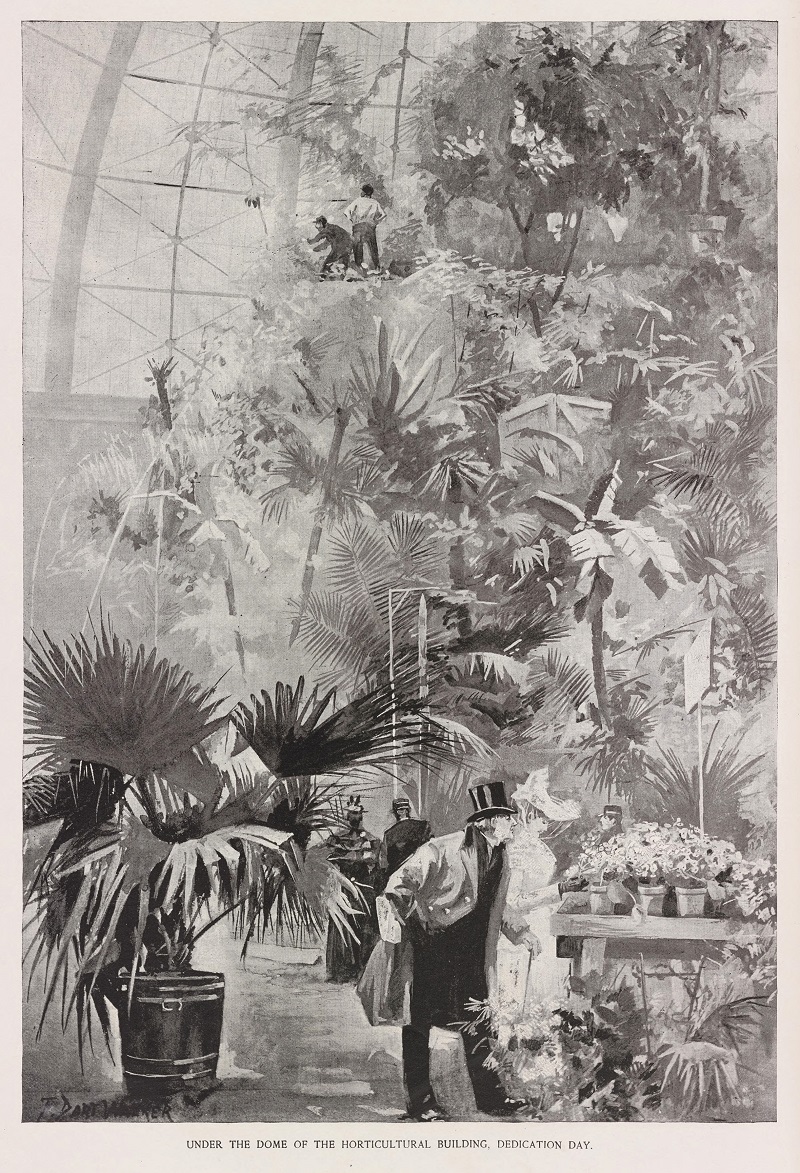
Under the dome of the Horticultural Building, though not on Dedication Day (October 21, 1892) as evidenced by the tall century plant. [Image from The Graphic History of the Fair. Graphic Co., 1894.]
Tequila legend?
In its report on the century plant, the New York World wrote that Agave Americana “is simply a gigantic cactus, bearing in its heart a rich syrupy secretion which, when tapped, the Mexicans call pulque, and when distilled becomes an intoxicant more fiery than Jersey lightning, known as mescal.” [“Where the Show Has Begun”] Rather than being produced from agave sap, mezcal is made from the cooked heart of certain agave plants, with tequila being the most popular variety.
That tequila was first introduced to Americans at the Columbian Exposition is one of those endlessly repeated assertions that seemingly has gone unchecked. Only a few references to pulque show up in contemporary reports from the 1893 World’s Fair.
Describing the distilled spirits exhibited at the Columbian Exposition, Guido Marx recorded that Mexico earned seven awards for mezcal brandy and also exhibited pulque, aguardiente, and many other native beverages extracted from plants or made from fruits.
Describing the products from Mexico displayed in the Agricultural Building, historian Hubert Bancroft noted that “samples of native drinks are plentiful, including pulque and other liquors extracted from native plants.” Another historian contradictorily recorded that “samples of the famous [Mexican] national beverage, pulque, however, can not be seen, as this liquor will not keep for any length of time.” [Walton lxi]
Whether or not tequila actually showed up at the 1893 World’s Fair, the century plant it is derived from made a spectacular show that summer.
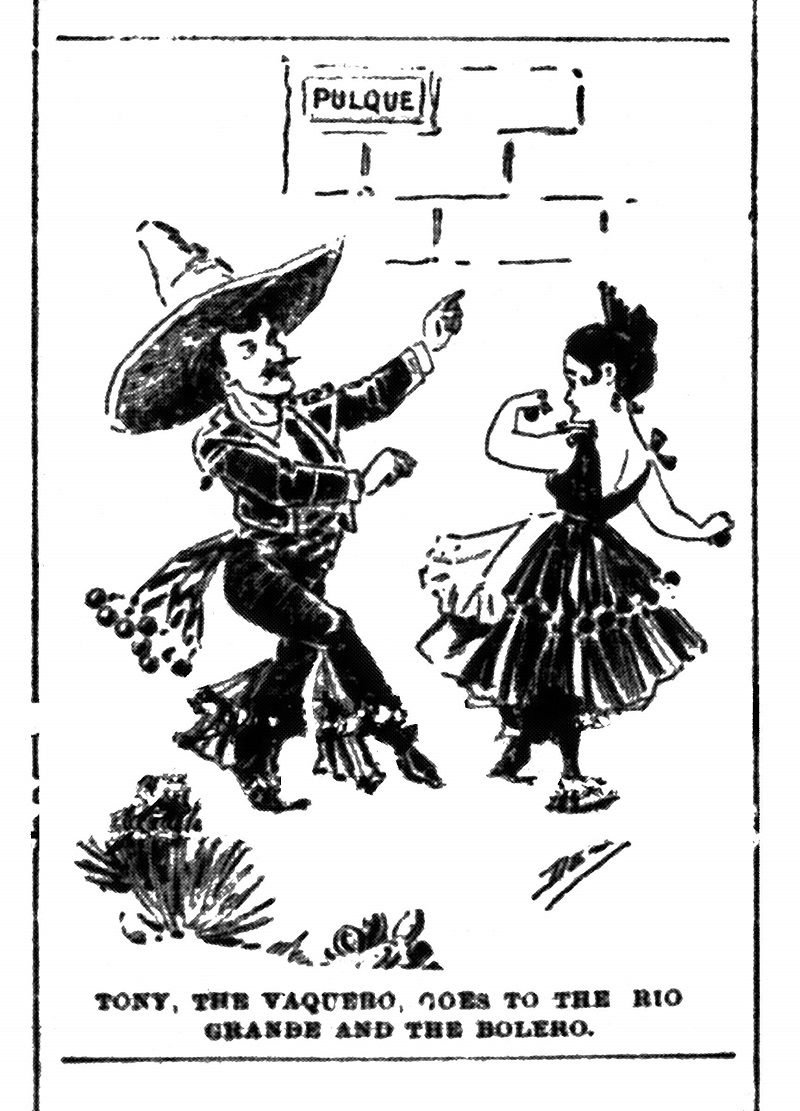
An illustration by W. W. Denslow for an article about the closing of Buffalo Bill’s Wild West and Congress of Rough Riders of the World shows some evidence of Mexican pulque at the World’s Fair. [Image from the Chicago Herald Nov. 5, 1893.]
SOURCES
“Another Chicago Letter” Brattleboro Vermont Phoenix Mar. 10, 1893 p. 1.
Chicago Tribune Jan. 25, 1893, p. 4.
“Century Plant in Full Bloom” Chicago Tribune Apr. 23, 1893, p. 2.
“Decatur Boy at the Fair” Decatur (IL) Daily Review May 7, 1893, p. 2.
“Gould’s Columbian Exhibit” New York Evening World Jan. 10, 1893, p. 4.
Los Angeles Times Apr. 26, 1893, p. 4.
Marx, Guido “Whiskies, Etc.” World’s Columbian Exposition Report on Committee of Awards Vol 2. 1901, pp. 997-1017.
“Primrose Show Open Soon” Chicago Tribune Jan. 3, 1893, p. 9.
“Products of the Soil” Indianapolis Journal May 1, 1893, p. 2.
“Rare Flower Exhibited” Chicago Inter Ocean Apr. 24, 1893, p. 2.
“Rare Horticultural Exhibits” World’s Columbian Exposition Illustrated Feb. 1893, p. 287.
Stevens, Mrs. Mark Six Month’s at the World’s Fair. Detroit Free Press Printing Co. 1895, p. 13.
“Takes Off the Caps” Chicago Tribune Apr. 24, 1893, p. 1.
Truman, Benjamin Cummings History of the World’s Fair. Mammoth, 1893.
Walton, William Art and Architecture of the World’s Fair. George Barrie & Son, 1893.
A Week at the Fair, Illustrating the Exhibits and Wonders of the World’s Columbian Exposition. Rand, McNally & Co., 1893.
“Where the Flowers Bloom” Chicago Inter Ocean Jan. 8, 1893, p. 5.
“Where the Show Has Begun” New York World Mar. 4, 1893, p. 4.
“With Night Caps On” Chicago Tribune Apr. 20, 1893, p. 2.
“World’s Fair Doings” Chicago Inter Ocean Jan. 22, 1893 p. 5.
“World’s Fair Notes” Rock Island (IL) Argus Apr. 25, 1893, p. 1.

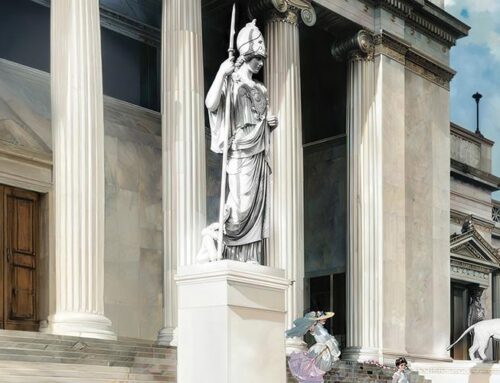
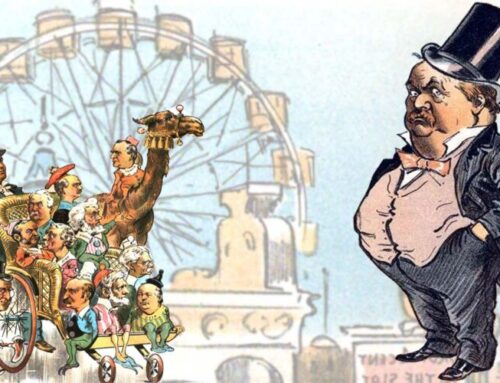
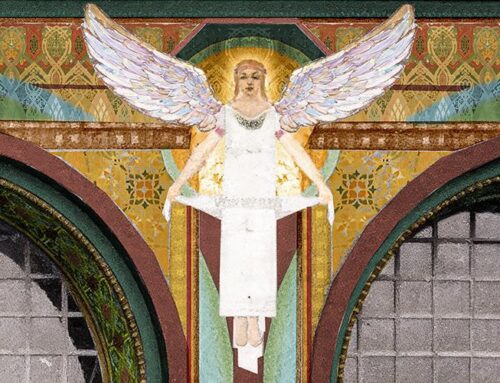
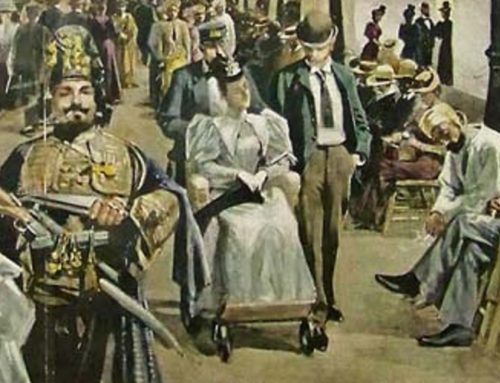

Leave A Comment